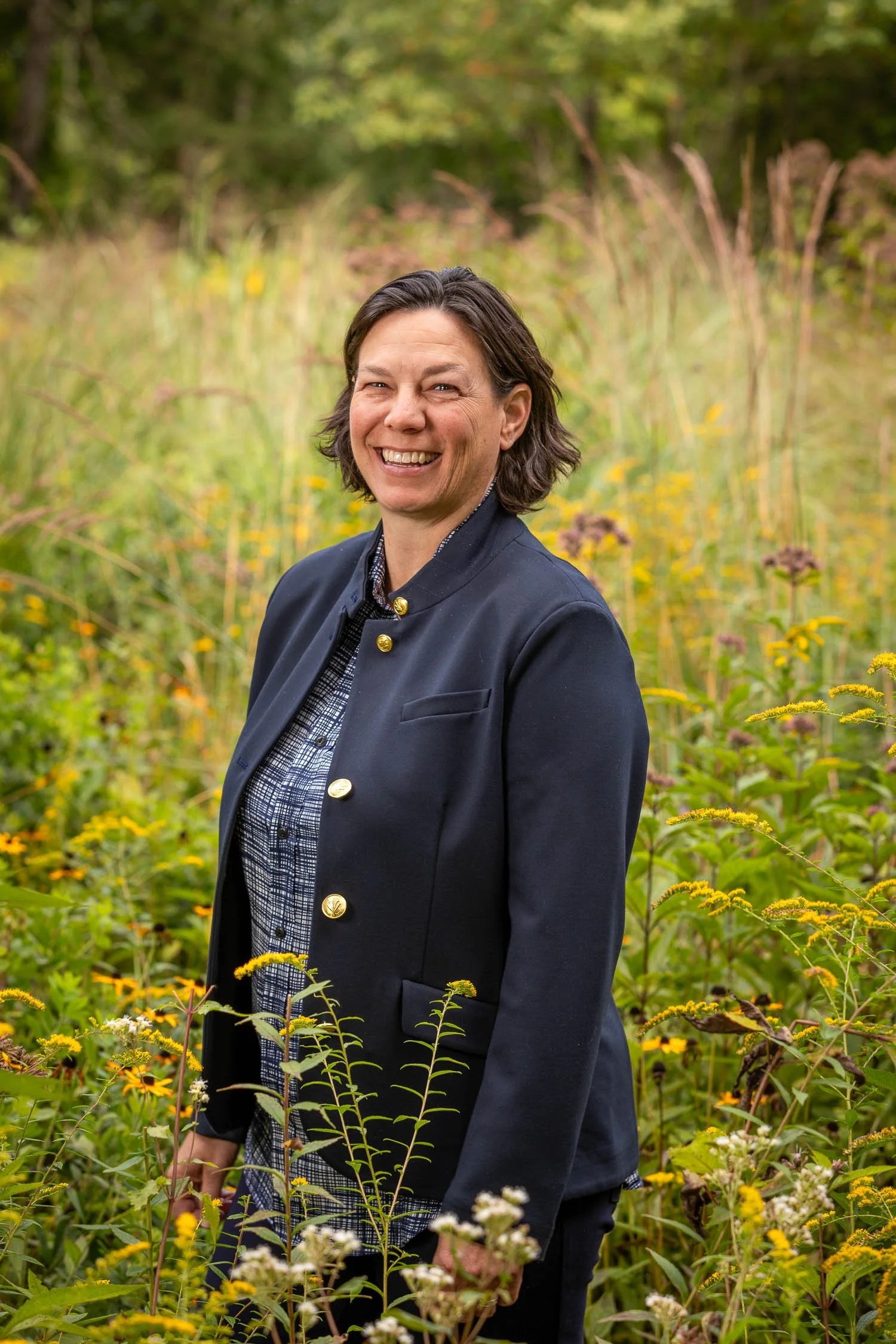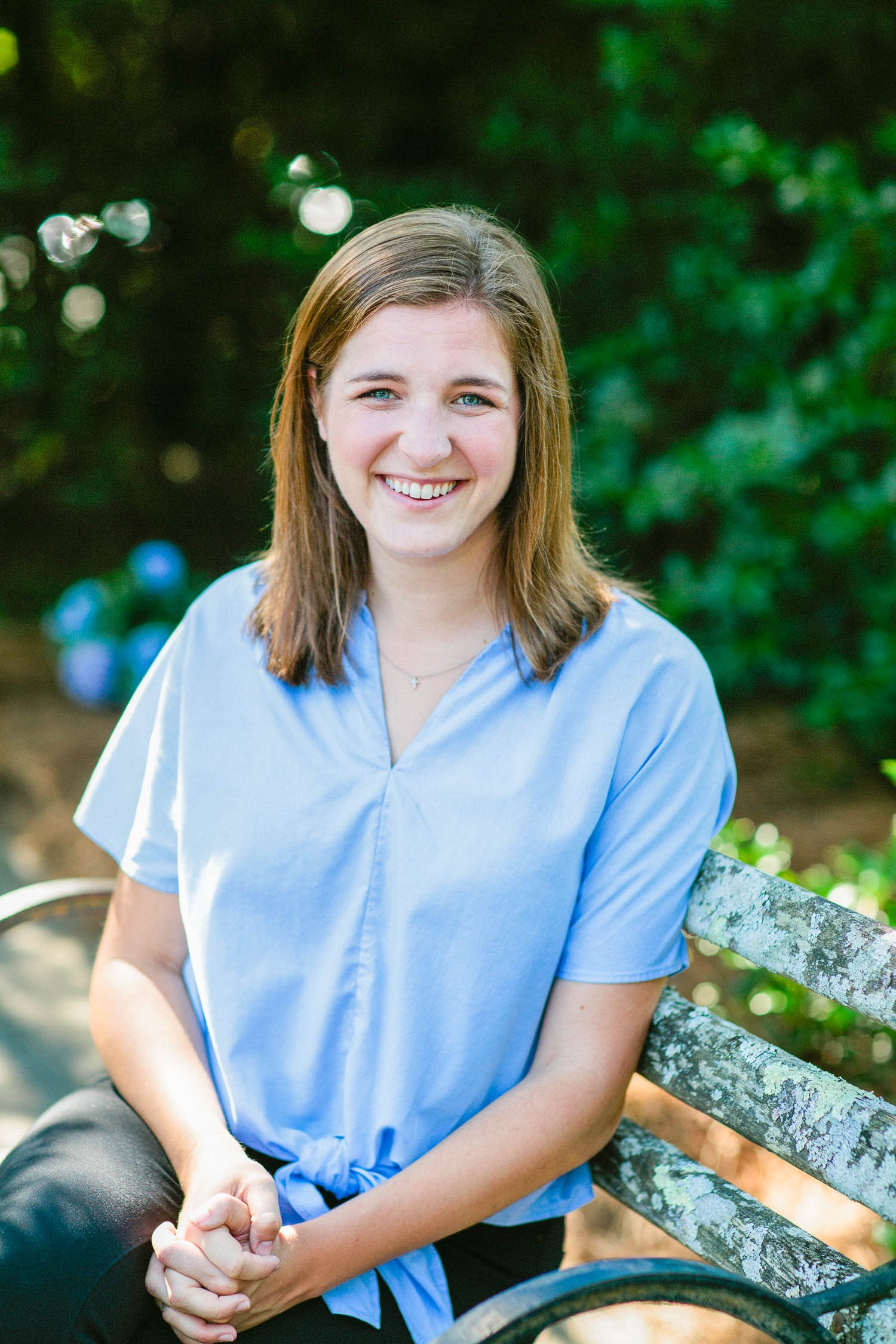MOLLY HENDRY BIO
Molly toggles the worlds of design and plants as both a trained horticulturist and landscape architect. She has stepped out to create her own garden design studio, Roots and Ramblings, where she does design work for folks in the Birmingham, Alabama area and beyond. With this studio, Molly is most interested in the intersection between people and places. She loves designing gardens for "hands in the dirt" gardeners, focusing on how design is not just a masterplan on a piece of paper, but an ongoing dialogue between a person and a place... often with a spade in hand!
Up through July 2023, she was the Associate Director of Gardens Support for the Friends of Birmingham Botanical Gardens for 5 and a half years. There she was actively involved in the horticultural and design development of the 26 unique gardens that make up Birmingham Botanical Gardens. One of her top honors is that she spent 10 months living in the UK, sinking her hands into the soil at some of the top gardens across the country as the Garden Club of America's 2016–2017 Royal Horticultural Society's Interchange Fellow. You can learn more about Molly by visiting her website Roots and Ramblings and by following her on Instagram @mollshendry.
SHOW NOTES
The origins and setting of the International Landscape Festival in Bergamo, Italy
How the medieval village atmosphere adds to the inspiration of the festival experience
Molly’s first trip to Bergamo and how it became a must-attend annual event
The structure of the weeklong program, including workshops, seminars, and the international meeting
Reflections on the workshop The Essential Tree Selection Guide by Henrik Sjöman and Arit Anderson
How tree selection should go beyond aesthetics to consider ecological function and long-term success
The importance of understanding trees as part of a successional process rather than static design elements
Reframing design as an ongoing process and not a finished product
Challenges in creating adaptable landscapes in the face of a changing climate
The concept of holding back part of a project budget for future edits and adaptive management
Lessons from Birmingham’s City Walk project and the need for long-term maintenance planning
How collaboration between designers, contractors, and municipalities can improve project outcomes
Reflections on sourcing challenges and how nursery practices shape plant availability
Why designers must work with growers and contractors to expand plant diversity in the trade
The balance between ecological succession and functional considerations like maintenance
The joy of meeting and learning from designer Sarah Price at Bergamo
Sarah’s design for Piazza Vecchia and how it blended art, place, and ecology
The influence of a medieval painting on Sarah’s design
Insights from Tom Stuart-Smith and gardener Katy Merrington on designer–gardener collaboration
Why gardeners should be brought in early and valued as co-creators in the process
Tom’s idea of being a conductor of something in motion rather than author of a static design
Katie’s reflections on public engagement and the human connections gardens foster
James Hitchmough’s focus on designing plantings based on their future management needs
The crucial question of who will maintain and fund ecologically rich plantings long term
Global perspectives on valuing horticultural labor and training future land stewards
Jon Hazelwood with the Melbourne project as a model for collaborative, research-based design
How integrating trial gardens and management planning during design leads to stronger outcomes
Molly’s experience applying similar collaborative lessons in her own design projects
Reflections on Mariana Siqueira’s presentation about restoring Brazil’s Cerrado grasslands
How Mariana’s persistence and partnership with a supportive client helped reintroduce native plants
The reassurance of hearing international designers face similar challenges
Takeaways from Hans Hesslein and Martha Keen of Apiary Studio’s presentation on creative reuse of materials and on-site storytelling
How Hans and Martha blend design, craft, and sustainability through resourceful construction
Inspiration to see hardscape elements as expressive, not merely functional
Lessons from Spanish designer Fernando Martos and his collaborator Carlos Rodriguez on managing naturalistic gardens
The camaraderie and creative renewal that comes from international conferences
Insights from redesigning Colonial Lake Park in Charleston, balancing resilience and beauty
Using Google docs to track ideas about different species for the project
The importance of integrating horticultural teams into the design process
Allowing on-site adjustments to improve outcomes and treat design as living collaboration
The possibility of creating a Bergamo-style design festival in the American Southeast
Why the Southeast is ripe for deeper horticultural exchange and ecological innovation
The regional diversity within southern plant communities and the value of sharing knowledge
Molly’s belief that design education should cultivate hands-on experience and curiosity
The idea of creating a gardening school or workshop space to empower homeowners through practice
How the Garden Gab podcast helps nurture beginner curiosity and confidence
Encouraging gardeners to experiment, make mistakes, and learn by doing
The value of small beginnings—like a single container—toward building joy and connection with plants
Reflections on how parenting and life changes shift perspective on maintenance and ecology
Observations on groundcover challenges in the Southeast and the need for continuous soil coverage
How to propagate more gardeners by connecting children to nature and fostering wonder early and cultivating joy through gardening
You can learn more about Molly by visiting her website Roots and Ramblings and by following her on Instagram @mollshendry.













